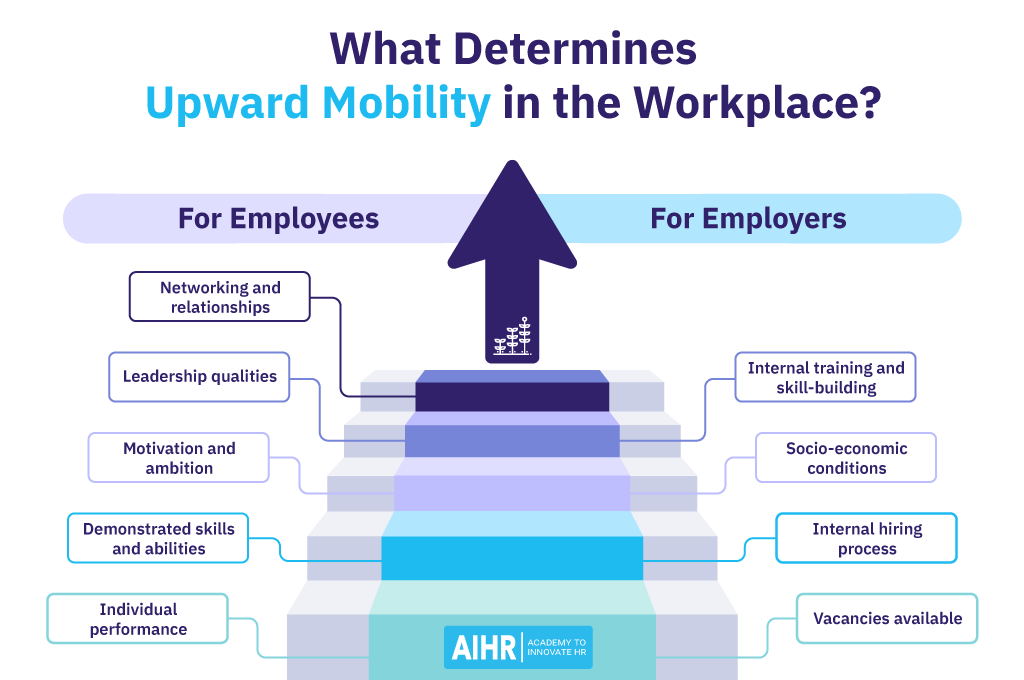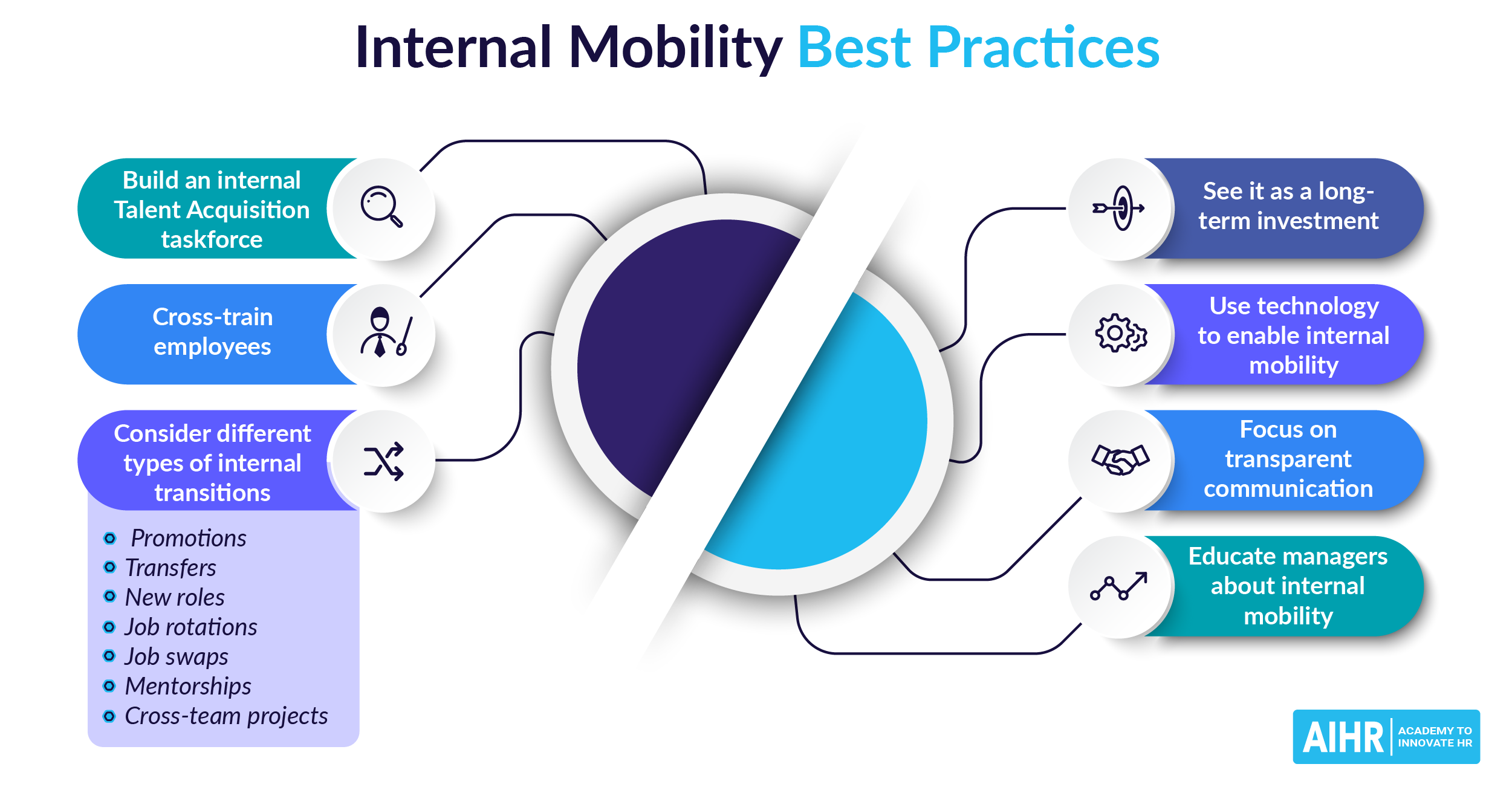Upward Mobility
Upward mobility definition
Upward mobility in the workplace refers to an employee’s ability to move up to higher positions or levels of responsibility within an organization. This often results in increased compensation, authority and job responsibilities.
Organizations with high upward mobility typically provide an environment where merit, skills, and achievements are recognized and rewarded, fostering employee motivation, retention, and professional growth. Jobs that offer limited or no opportunities for upward mobility are known as “dead-end” jobs. Such positions can contribute to increased ‘’job hopping’’ and a decrease in employee loyalty.
What determines upward mobility?
Upward mobility in a job is usually achieved through a combination of factors including education, experience, performance, networking, and sometimes, organizational politics.
| From the employees perspective | From the employers perpective |
|---|---|
| Individual performance: Employees who consistently deliver high-quality work and exceed expectations are more likely to be considered for promotions. | Socio-economic conditions: Economic conditions and industry trends can affect job availability and potential for upward mobility. In a booming economy, there might be more opportunities for growth. |
| Leadership qualities: In order to be promoted into managerial positions, employees need to develop their leadership skills. | Internal hiring policies: Companies that prefer to promote from within can enhance their upward mobility. |
| Demonstrated skills and abilities: Leadership, communication, problem-solving, and adaptability are among the skills that can set an individual apart and make them suitable for higher roles. | Internal training and skill-building: Organizations that invest in employee training increase the likelihood of internal promotions. |
| Motivation and ambition: The willingness to learn and the ambition to grow can play a significant role in an individual’s upward mobility. | Opportunities and vacancies: The availability of higher-ranking positions within an organization influences upward mobility. |
| Networking and relationships: Having opportunities to create relationships and get mentorship can boost one’s chances to move upward in the organization. | Performance management: Regular feedback and performance reviews can provide employees with insights into their strengths and areas of improvement, which can influence their career progression. |

Examples of upward mobility
Upward mobility can be observed in various fields and at different stages of an employee’s career:
- A Junior Engineer who advances to Lead Engineer after several years of experience and professional growth.
- An HR Assistant promoted to HR Coordinator after a few years with the company.
- A Sales Agent who is promoted to Sales Manager after displaying leadership qualities and high performance.
- A Legal Intern who is accepted as a Junior Associate in the same law firm where they completed their internship.
How can HR implement an upward mobility program
Implementing an upward mobility program requires HR to establish a structured approach that focuses on the development and progression of the employees. Such a program can help organizations nurture talent from within and increase employee satisfaction. Here’s how HR can implement upward mobility in the workplace:
1. Define clear objectives
Outline the program’s goals, such as increasing the representation of specific groups in leadership roles or ensuring a particular percentage of promotions come from within. Making upward mobility a core principle of the company can boost your employer’s reputation and develop long-term loyal and highly talented employees.
2. Develop career pathways
Make sure there is a clear career pathway for employees, outlining the steps and qualifications needed to move up in the organization. Job postings need to be transparent with well-defined requirements so employees know what they need to achieve to qualify.
In some cases, offering a robust network of lateral transfer opportunities also allows employees to broaden their expertise, potentially leading to a position with greater upward mobility in the future.
3. Provide training and development
Provide the training, experience opportunities, and resources necessary for employees at each level to advance. This might involve offering workshops, courses, and certifications that help employees acquire the skills needed for upward mobility.
4. Implement mentorship programs
Mentorship programs play an essential role in upward mobility. By pairing emerging talent with established leaders, you ensure that the organization’s values, skills, and knowledge are passed down effectively.
5. Prioritize internal hiring
Before seeking talent externally, it’s crucial to first explore the pool of high-performing individuals within the company who possess the potential for leadership. This not only rewards and retains top performers but also maintains organizational continuity and culture.
HR tip
To support employees aiming for upward mobility, it’s essential for HR professionals to establish clear and transparent career paths. Offering regular discussions about goals and providing access to relevant resources can give employees a clear vision of their potential growth within the organization.







